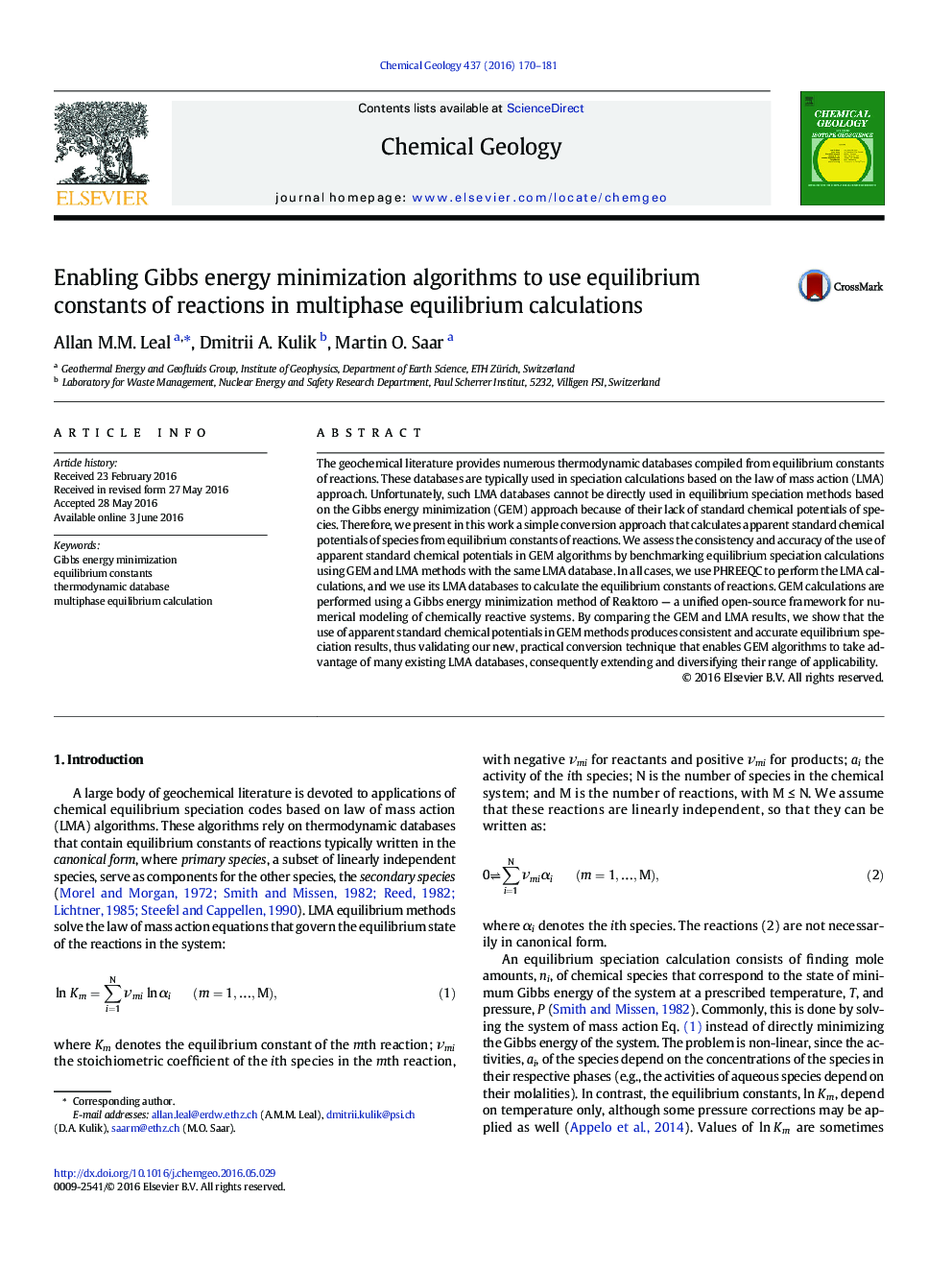| Article ID | Journal | Published Year | Pages | File Type |
|---|---|---|---|---|
| 6436094 | Chemical Geology | 2016 | 12 Pages |
â¢We present a new, practical approach for calculation of apparent standard chemical potentials of species from equilibrium constants of reactions.â¢The approach enables Gibbs energy minimization (GEM) methods to take direct advantage of numerous existing thermodynamic databases in the literature containing equilibrium constants of reactions.â¢We prove that the use of apparent standard chemical potentials in a GEM formulation is equivalent to a law of mass action (LMA) formulation using the original equilibrium constants.â¢For demonstration purposes, equilibrium constants of PHREEQC databases are used for calculations of apparent standard chemical potentials of species.â¢A GEM method of Reaktoro, using apparent standard chemical potentials converted from equilibrium constants, and the LMA method of PHREEQC, using the same equilibrium constants, are shown to produce consistent and accurate speciation results.
The geochemical literature provides numerous thermodynamic databases compiled from equilibrium constants of reactions. These databases are typically used in speciation calculations based on the law of mass action (LMA) approach. Unfortunately, such LMA databases cannot be directly used in equilibrium speciation methods based on the Gibbs energy minimization (GEM) approach because of their lack of standard chemical potentials of species. Therefore, we present in this work a simple conversion approach that calculates apparent standard chemical potentials of species from equilibrium constants of reactions. We assess the consistency and accuracy of the use of apparent standard chemical potentials in GEM algorithms by benchmarking equilibrium speciation calculations using GEM and LMA methods with the same LMA database. In all cases, we use PHREEQC to perform the LMA calculations, and we use its LMA databases to calculate the equilibrium constants of reactions. GEM calculations are performed using a Gibbs energy minimization method of Reaktoro - a unified open-source framework for numerical modeling of chemically reactive systems. By comparing the GEM and LMA results, we show that the use of apparent standard chemical potentials in GEM methods produces consistent and accurate equilibrium speciation results, thus validating our new, practical conversion technique that enables GEM algorithms to take advantage of many existing LMA databases, consequently extending and diversifying their range of applicability.
